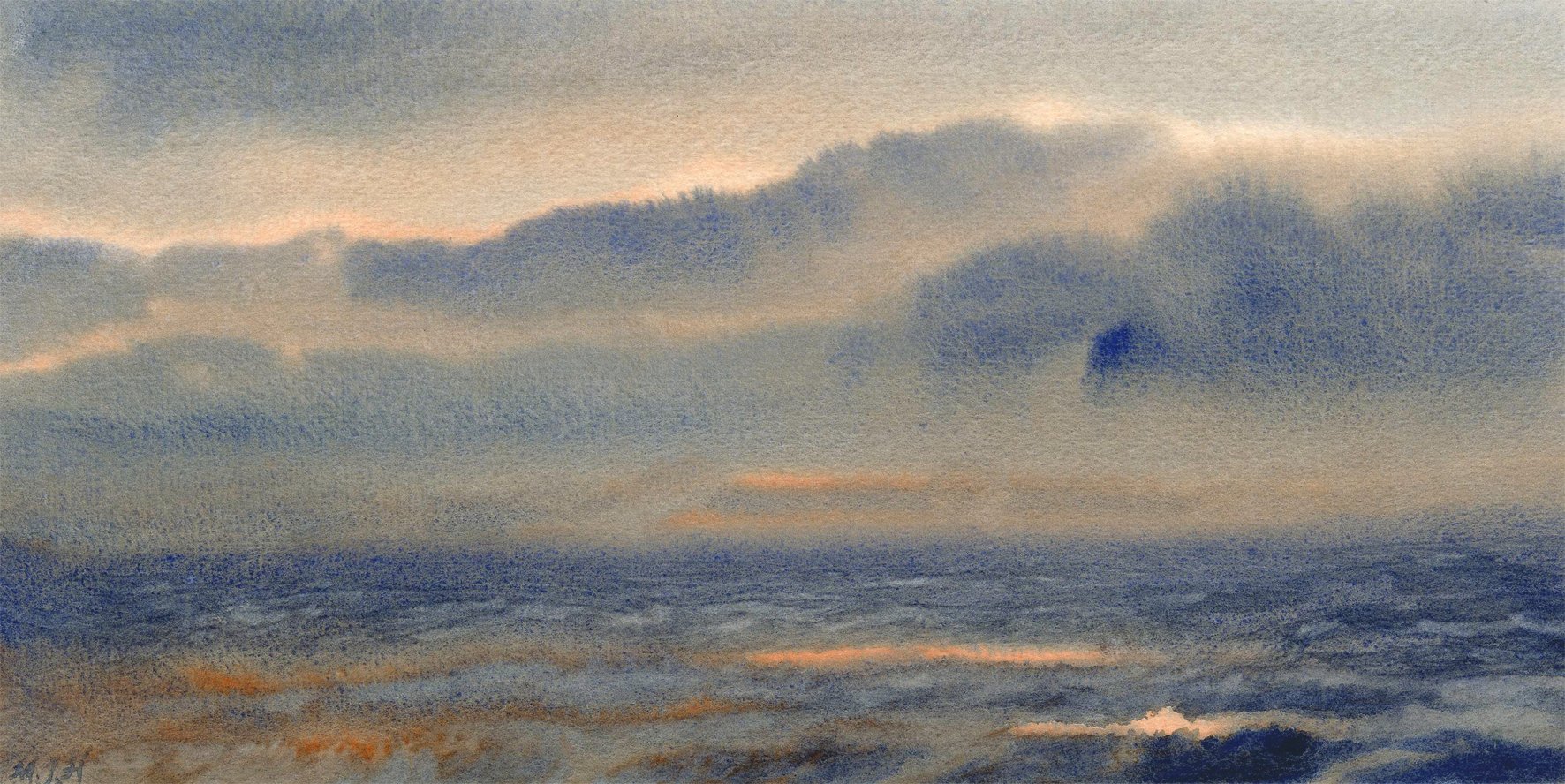
Artistic Influences
“The painter should paint not only what he has in front of him, but also what he sees inside himself” – Caspar David Friedrich
I have always felt inspired by the work of other artists and there are certain artists who have influenced the development of my work over the years, in particular: Claude Monet, James McNeill Whistler, J M W Turner, Caspar David Friedrich and Mark Rothko.
Claude Monet
French impressionist Claude Monet has been a particular inspiration in my approach to atmosphere in Landscape. He would often use a build-up of small strokes (or ‘taches’) with subtle shifts in colour and tone to recreate the sensation of looking through atmospheric layers.
His work, of course, was primarily in oil paints, but the influence of his technique is something that I have integrated into my soft pastel work in a personal way.
"What keeps my heart awake is colourful silence"
- Claude Monet
James McNeill Whistler
"All artists, whether they know it or not, create from a place of no-mind, from inner stillness"
- James McNeill Whistler
I have always been drawn to the magical and mystical effects of low light at dawn and dusk. Whistler’s Nocturnes are beautiful exercises in low key harmonies and balanced composition. There is such a feeling of stillness and sense of deep reflection as you contemplate these quiet masterpieces. Darkness shrouds the scene and structures appear ghostlike as their edges are softened by the layers of atmosphere.
The handling of the oil paint is subtle and masterful and has, to some extent, contributed to the subtlety of my own approach to low light situations. Soft Pastels lend themselves to the softening of edges and the subtlety of layers and I often choose a contrasting warm paper colour to set off the quiet blue-grey harmonies of such a scene.
J M W Turner
JMW Turner’s atmospheric masterpieces combine romanticism with the beginnings of abstraction. The vaporous layers are captured with energy and fluidity. Detail is minimal and nature’s light and drama becomes the subject.
There is a feeling of awe and wonder as you contemplate a Turner and you feel yourself to be surrounded by the elements. There is such a sense of exploration in the layering of the paint and the simplifying of form that you cannot help, as an artist, being excited by the creative possibilities. I think this is the element that I have carried forward into my own work-that sense of adventure, of joy in the painting and of revelling in the unknown.
Turner has encouraged me to journey beyond any safe boundaries of realism into a world of semi-abstraction and personal expression.
"My business is to paint what I see, not what I know is there"
- J M W Turner
Caspar David Friedrich
"What art offers is space - a certain breathing room for the spirit"
- Caspar David Friedrich
Caspar David Friedrich was a 19th-century German romantic landscape painter. For me, his paintings have a sense of grandeur and majesty about them. Spiritually inspired and beautifully crafted, they are like well composed symphonies in a minor scale that resonate with something deep inside. His landscapes, often shrouded in mist, have a nocturnal depth of tone and a masterful sense of composition.
Through his works, you are not just contemplating a scene but experiencing the divine presence at the same time. In my own work, I often seek out the graceful and majestic in landscape and have developed a personal sense of composition. I resonate with Friedrich’s desire to reflect the divine through the beauty and mystery of landscape.
Mark Rothko
I remember sitting in one of the Rothko rooms at The Tate Gallery (late in the afternoon when it was a little quieter), feeling myself drawn into the colour fields of one of Mark Rothko’s ‘Burgundy on Black’ abstract paintings. The more I stared, the more I became lost in the subtle shifts of tone and colour. It seemed to echo the experience of staring at a landscape at dawn, before the light appears, trying to make out the shapes. It amazed me that by reducing the form to soft-edged rectangles and concentrating on carefully modulated paint layers, Rothko could somehow replicate the feelings of being in a low-key landscape.
The scale of the pieces give them a monumental presence, almost cathedral-like in their sacred stature. They encourage you to slow right down and enter into their illusory space. I was rewarded for my willingness to do this by a profound spiritual experience which has stayed with me ever since. My appreciation of Rothko’s work has encouraged me to explore the emotional and spiritual impact of quiet shifts in colour-tones and to simplify subject matter to the point of abstraction. He has also encouraged me to work on a larger scale so that rather than looking from the outside in you become absorbed into the surface.
"A painting is not a picture of an experience, but is the experience"
- Mark Rothko
